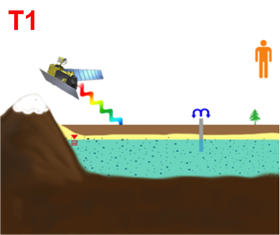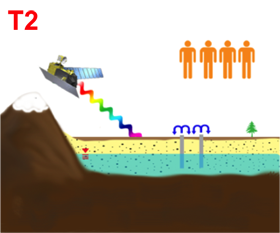Subsidence in Mexico
Applications of InSAR time series imagery for subsidence hazards and water resources exploitation in four Mexican metropolitans
Land subsidence in metropolitan areas is a major human-induced geological hazard that affects buildings and urban infrastructure and results in severe economical consequences for both individuals and local government administrations.
|
|
|
|
|
|
In Mexico the intense water exploitation in urban areas has resulted in high subsidence rates and consequently increasing geological hazards. Mexico City, which is the second largest metropolitan in the world, subsidence rates exceed 370 mm/yr resulting in continuous structural damage to houses and infrastructure. In other cities in central Mexico, subsidence is at relatively lower levels, but still high enough (40-90 mm/yr) to cause significant surface faulting and induce structural damage to a large number of houses and urban infrastructure. These observed subsidence rates are induced by increasing water demands, rapid groundwater level drop and sediment consolidation occurring due to rapid growth of urban population and higher standard of living. The fast growth of the Mexican economy, specially on the more industrialized central and northern part of Mexico suggests that water demand will continue to increase, which will magnify the subsidence and the related hazard in several Mexican urban areas.

|

|
